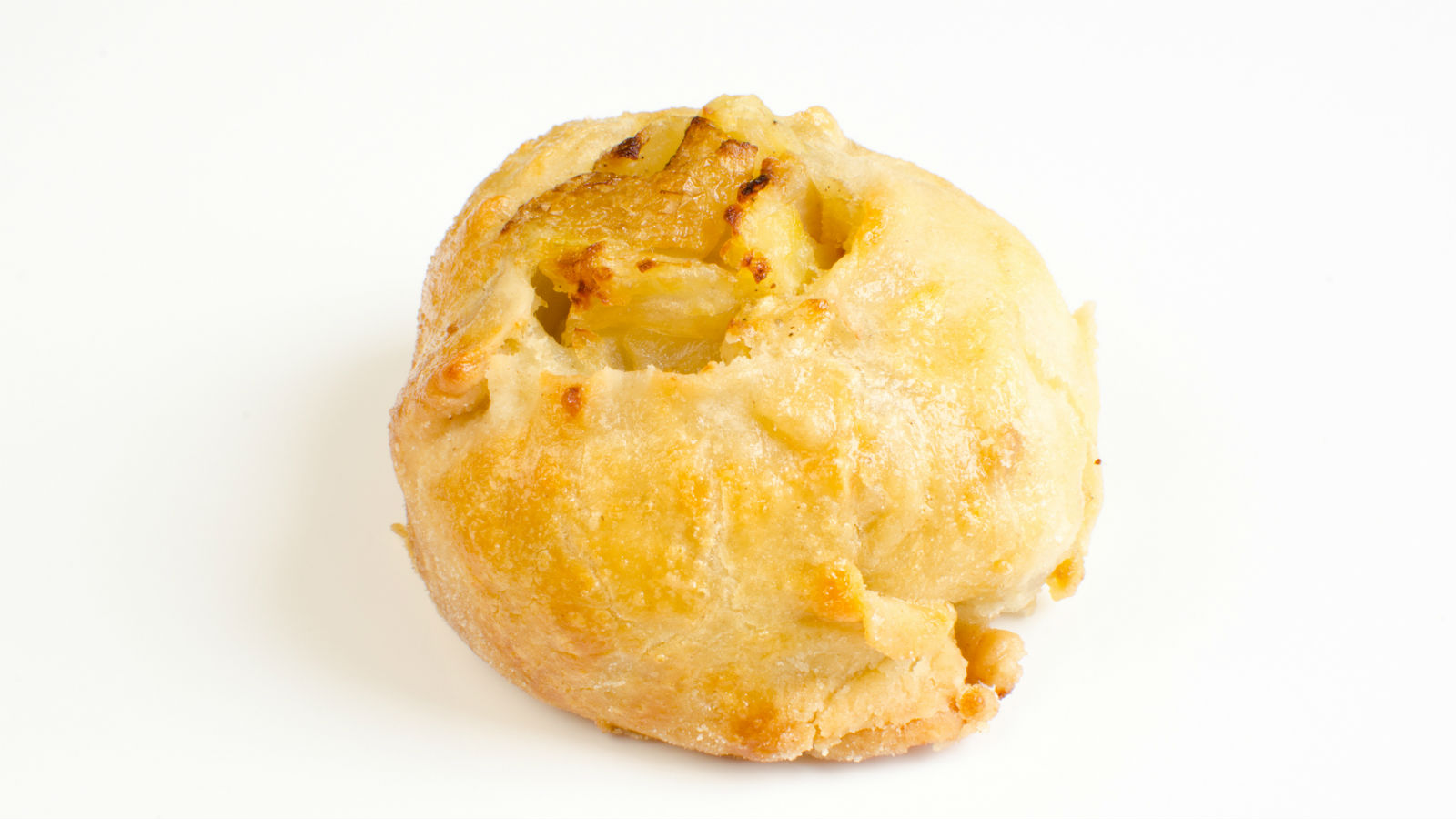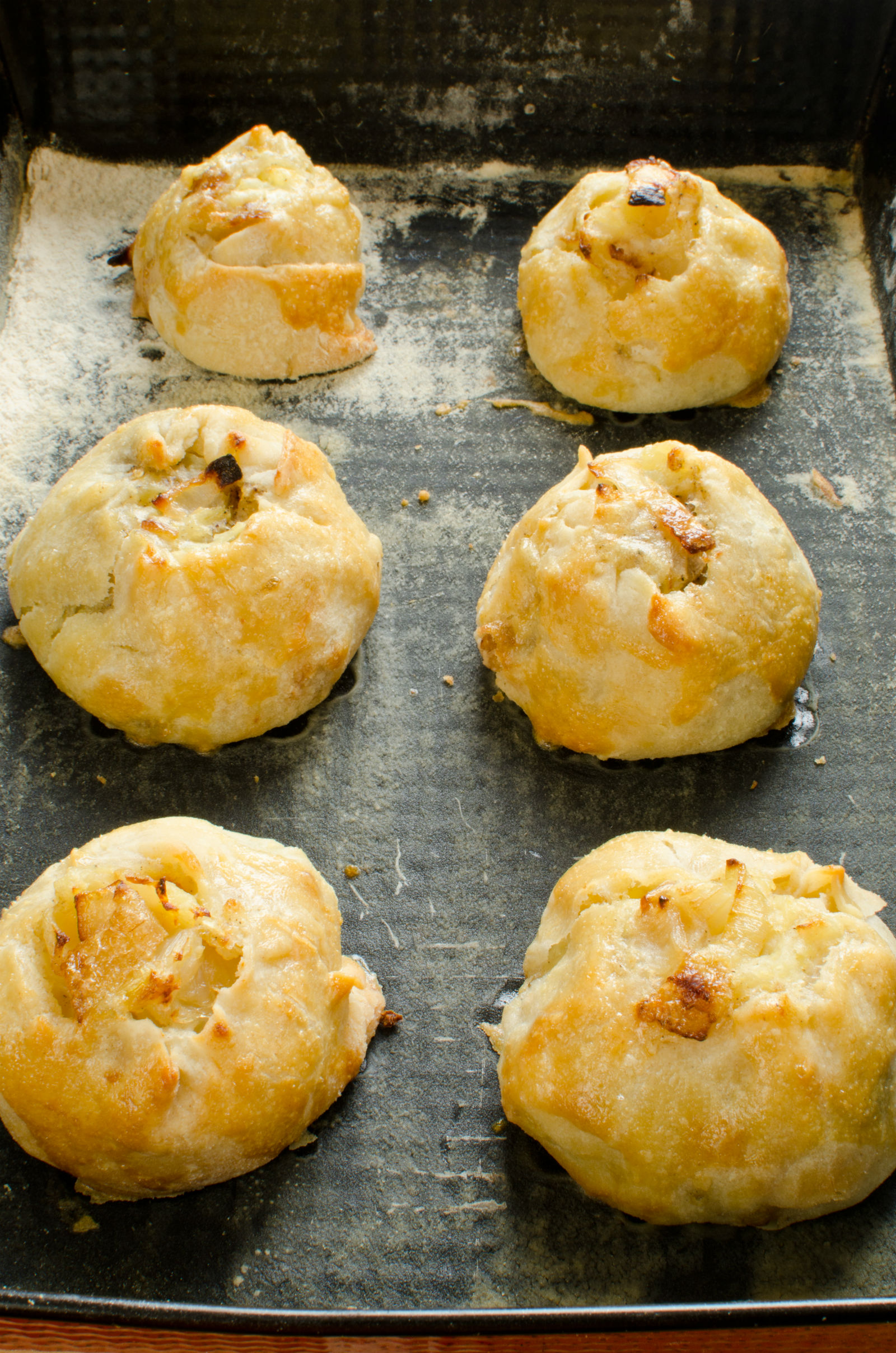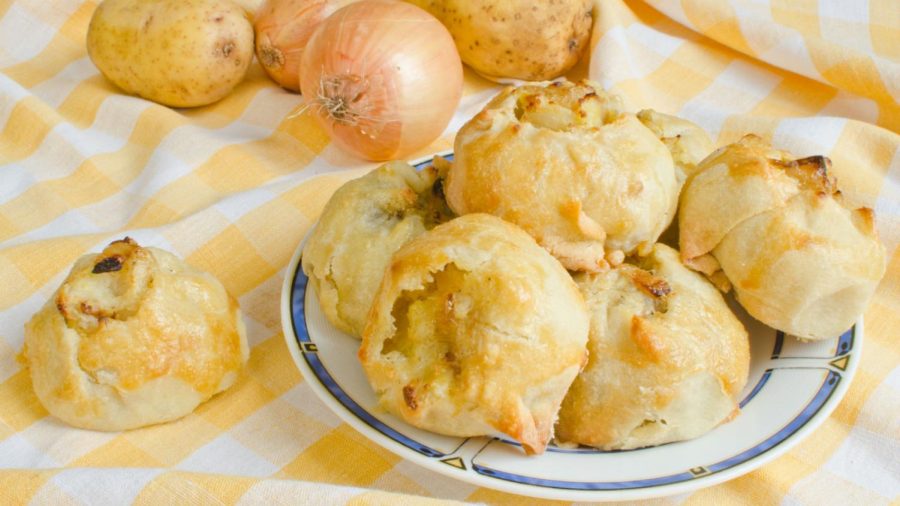The history of the knish in America
Published March 12, 2023
This story was originally published on March 12, 2020
Medody: What is this?
Boris: A knish.
ADVERTISEMENT
Melody: And what’s it made of?
Boris: I’ve been eating these things for years, they’re delicious. I don’t know what’s in them. I don’t want to know what’s in them. Don’t even talk about it!
The aforementioned exchange, which takes place in a scene from Woody Allen’s 2009 comedy, Whatever Works, is a fitting summation of the undeniable, albeit sometimes inexplicable, appeal of the knish.
The exact composition of this dish is similarly nebulous. Comprising a softball-size lump of dough that may be baked or deep-fried, a knish is traditionally packed with mashed potatoes or kasha (buckwheat grains). Pastrami, cheese, sweet potatoes, spinach, mushrooms, and caramelized onions, and combinations are common fillings; however, there are no rules when it comes to stuffing. Google “‘knish recipe”’ and you’ll even find fusion versions, such as Cuban-style knishes and sweet iterations, like cherry cream cheese.

How did this once humble snack sold on street carts rise to become a food cherished by the masses and fodder for comedic banter?
Around the turn of the 20th century, a wave of Ashkenazi Jewish immigrants from Central and Eastern Europe arrived in America with hope for freedom from persecution and armed with recipes from their motherlands. Called “knysh“ by the Ukrainians and “knysz“ by the Poles, this simple spherical dough pocket came to be known by its Yiddish derivative, knish, and in 1910, it officially went mainstream when the first knish bakery opened in New York City.
The number of knish-specific shops proliferated, and knishes began popping up on menus on other Jewish-owned businesses such as delicatessens and groceries. One such establishment was a bakery founded by Yonah Schimmel, a Romanian Jewish immigrant, alongside his cousin Joseph Berger. Yonah Schimmel’s Knish Bakery is a true testament to New York’s, and indeed, America’s long-standing love for the knish, for it has remained in continuous operation for over one hundred years and is still run by descendants of Schimmel. In addition to serving as a filming location for the aforementioned Allen film, the iconic Lower East Side bakery is also commemorated in a painting by Hedy Pagremanski that is part of the Museum of the City of New York’s permanent collection.
ADVERTISEMENT
Sadly, Yonah Schimmel Knish Bakery’s longevity renders it an exception, for just as the latter half of the twentieth century saw the decline of the Jewish delicatessen, so, too, did the world of bakeries dedicated to making knishes grow smaller and smaller. Another venerated (and now sadly closed) institution was Mrs. Stahl’s Knishes, whose proprietress and namesake began selling her knishes (literally) on Brighton Beach before opening a brick-and-mortar location in the historically-Jewish neighborhood. Mrs. Stahl enjoyed steady business until gentrification and changing demographics altered local culinary consumption patterns forced the bakery to shut its doors in 2005.
But in the last decade the tide has turned, as the taste for and renewed interest in knishes has increased among younger generations of aficionados of Jewish fare, culinary historians, and Jewish chefs.

In 2013, the lil’ ol’ knish was chosen to represent the unique linguistic phenomenon that is the New York accent in an acclaimed documentary directed by Heather Quinlan. In If These Knishes Could Talk: The Story of the New York Accent, Quinlan interviews long-time residents of the Big Apple (laypersons as well as celebrities) for their take on how and why they speak the way they do.
In 2014, knish enthusiast and journalist Laura Silver published Knish: In Search of the Jewish Soul Food, a part-history, part-memoir that investigates the origins of these potato pastries as well as chronicles those who became famous for making them.
And most recently, in late February of this year, The Gefilteria, a culinary project aimed to preserve old-world Jewish foods through education, demonstrations, and celebrations, hosted a “Knish Week” in which they posted knish dough preparation techniques and fun riffs on standard recipes (e.g., Kitchen Sink Knishes, intended to use up any leftover vegetables and herbs in your fridge).
I hungrily and happily predict that the knish is very well on its way to a comeback.
















